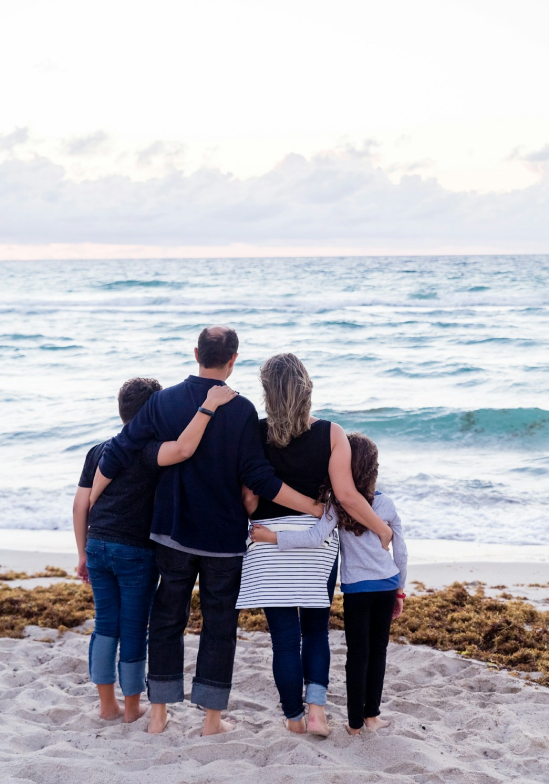Finding out that your child is trans or non-binary can bring up many emotions. Some families experience it with naturalness, tenderness, and support. For others, it opens the door to uncertainty, doubts, and fears. These insecurities from the adults who love and care for us can turn into anguish, misunderstanding, and loneliness for minors. That’s why, in all these cases, what we need is clear information, practical tools, and respectful support. This is where this guide for families with trans children and youth comes from.
This article is intended for mothers, fathers, and caregivers who want to know how to support a trans or non-binary child with sensitivity and safety. It explains the current legal framework in Spain, what steps to follow according to age, how public healthcare works in our country, and what resources are available so that the child’s transition is as favorable as possible. Supporting a trans person from childhood or adolescence can make a radical difference in their physical and emotional well-being, both present and future.
The Spanish Trans Law: one of the most advanced
Law 4/2023 for the real and effective equality of trans people and the guarantee of LGTBIQ+ rights places Spain among the most advanced countries in the world in recognizing gender identity. Since it came into force:
-
- The right to self-determine gender identity is recognized without the need for medical or psychological reports.
- People over 16 years old can request the legal change of name and sex on their own, without the authorization of an adult, guardian, or doctor.
- People aged 14 to 16 can do so with the authorization of their legal guardians.
- From 12 to 14 years old, the change can be processed with judicial authorization.
- Conversion therapies are prohibited, and protection against discrimination in education, healthcare, sports, and employment is reinforced. This safeguards the physical, emotional, and social health of trans children.
Thus, this law does not require medical, hormonal, or surgical interventions to validate a trans person’s identity. It recognizes that each process is unique and must be respected.
What does WPATH say about family support?
The international standards for the care of trans and gender-diverse people, outlined in the most recent version of the WPATH Standards of Care (v8), recommend an affirmative approach. What does that mean? It means placing the child at the center, respecting their gender expression and identity, without imposing timelines or interventions.
Supporting affirmatively means:
-
- Listening without judgment to the experiences of the child or adolescent.
- Validating their identity and gender expression.
- Ensuring a safe environment at home and in school.
- Seeking professional support with specific training in gender diversity.
- Protecting them from bullying, invisibility, or rejection.
As families, you don’t need to have all the answers. But your loving, respectful, and well-informed support is the strongest protection against anxiety, depression, or emotional distress in trans childhood.

Steps to follow depending on age
The support process may vary depending on the stage of development. These stages are only guidelines, since it depends on many factors such as the child’s maturity, environment, and ability to express who they are.
Early childhood (ages 3–6)
At this stage, children may say things like “I’m not a boy/girl” or show persistent behaviors that express a different gender experience. The most important thing is not to correct or block them, but to allow the child to freely explore their identity, expression, preferences, and ways of playing. Remember that play style does not reveal a child’s gender identity or sexual orientation. Gendered games are purely a social construct.
Middle childhood (ages 6–11)
It is common for the desire to use a different name, pronouns, or gender expression aligned with their internal experience to become clearer. They may want to dress or take on the role of the gender with which they identify. Here, a social transition (name, clothing, treatment) may begin without any medical intervention.
Early adolescence (ages 12–14)
Distress about bodily changes often intensifies at this stage. This is when the use of puberty blockers may be considered, always with medical evaluation and consent. This is a reversible treatment that allows more time and peace of mind in decision-making. That doesn’t mean we shouldn’t stay informed about what hormonal treatment entails.
Middle and late adolescence (ages 14–18)
Access to hormone therapy with testosterone or estrogen is possible under medical supervision. From age 16 onward, no judicial authorization is required either for treatment or for the legal change of name and sex in the civil registry.
This is also when some trans youth may consider gender-affirming surgery. But it’s important to remember that not all trans children, young people or adults, want or need medical treatments. Validating their identity doesn’t mean steering them in any direction, but respecting their timing and decisions.

Public healthcare: regional differences
In Spain, access to medical care for trans people depends largely on the autonomous community where they live. The public healthcare system has gender identity units that provide psychological, endocrinological, and, in some cases, surgical care.
The circuit in Catalonia: the Trànsit model
Catalonia has the Trànsit Service, a pioneering public model that:
-
- Serves trans people of all ages.
- Provides psychological support without pathologizing.
- Allows access to endocrinology without requiring a diagnosis of gender dysphoria.
- Prioritizes respect for each person’s pace and wishes.
Access is possible through the primary care center (CAP) or by contacting the service directly. In other communities, the model may be more clinical or involve longer waiting times. That’s why it is important to get well-informed in each region.
Useful resources for families
No one should go through this journey alone. There are specific resources for families of trans children:
-
- Family associations such as Chrysallis, AMPGYL, or Naizen, among others.
- Peer support networks among parents in similar situations.
- Child and youth psychology teams specialized in gender identity.
- Public services such as Trànsit or specific units in other regions.
- Reliable information in specialized blogs such as IM GENDER’s.
What if my child doesn’t identify as a boy or a girl?
Some people, from very young ages, express a non-binary experience—that is, they don’t identify within the boy/girl binary. The Spanish Trans Law recognizes this possibility and allows the registered name to reflect a non-binary identity.
It’s not about confusing them, but about creating space for diverse realities. Non-binary people can also undergo a social transition, access medical treatments, or not pursue any intervention at all. Every process is valid, unique, and unrepeatable.
At IM GENDER, we know that family support significantly improves the emotional and psychological health of trans minors. Supporting means being present, validating, not questioning their truth. You don’t need to understand everything on the first day. It’s enough for them to know that the people who love them remain by their side.
Need guidance? IM GENDER is here to help you get started
At IM GENDER we offer resources and information like this guide for families with trans children, enabling families to support all of them in their process.






